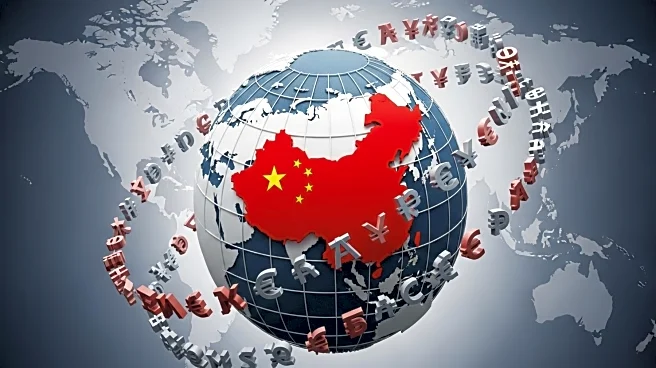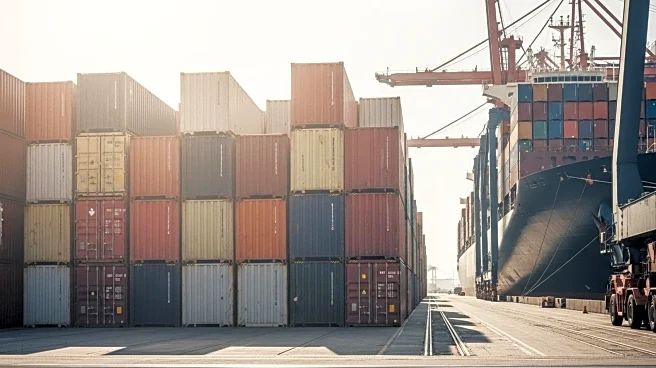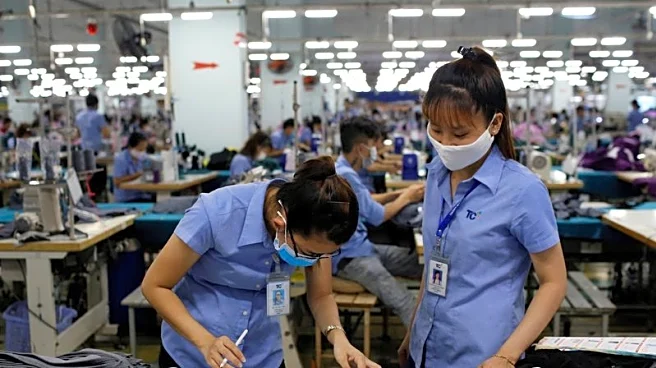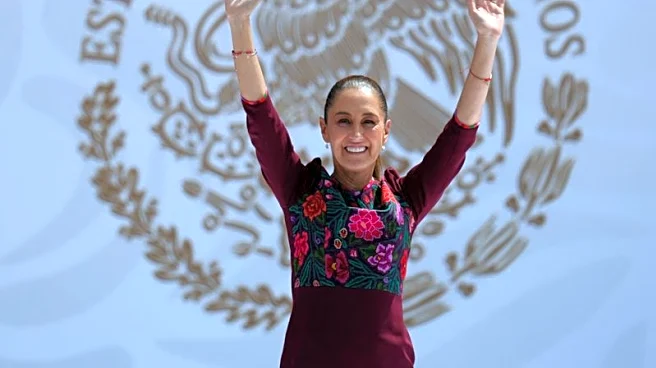What's Happening?
The World Bank has revised its growth forecast for China's economy, projecting a 4.8% expansion in 2025, up from the 4% predicted earlier in April. This adjustment comes despite ongoing trade tensions with the United States, which saw tariffs on Chinese imports temporarily rise to over 100% before a trade truce was reached. Currently, U.S. tariffs on China stand at 57.6%, more than double the rate at the beginning of the year. China's economic growth has been supported by government stimulus and targeted consumer trade-in programs, which have bolstered retail sales. Additionally, China's exports have continued to rise, driven by increased shipments to Southeast Asia and Europe, offsetting a decline in exports to the U.S. However, the World Bank anticipates a slowdown in China's GDP growth to 4.2% in 2026, partly due to a deceleration in exports growth.
Why It's Important?
The adjustment in China's growth forecast by the World Bank highlights the resilience of China's economy amid global trade uncertainties, particularly with the United States. The ongoing trade tensions have significant implications for global economic stability, as the U.S. and China are major economic players. The increase in tariffs and subsequent trade truce reflect the complex dynamics of international trade relations, which can impact global supply chains and economic growth. For U.S. businesses, the tariffs could lead to increased costs and disruptions in sourcing from China, affecting profitability and competitiveness. Conversely, China's ability to maintain growth through exports to other regions demonstrates its strategic economic positioning, which could influence future trade negotiations and economic policies.
What's Next?
Looking ahead, the World Bank's forecast suggests that China's economic growth may slow in 2026, as export growth decelerates and government stimulus is potentially reduced to manage public debt levels. This anticipated slowdown could prompt China to explore alternative growth strategies, such as increasing domestic consumption or enhancing technological innovation. For the U.S., the ongoing trade tensions with China may lead to further negotiations or adjustments in tariff policies, impacting bilateral trade relations. Businesses and policymakers in both countries will need to navigate these economic challenges, balancing trade interests with broader economic goals.
Beyond the Headlines
The trade tensions between the U.S. and China underscore broader geopolitical and economic shifts, with potential long-term implications for global trade patterns and economic alliances. The situation raises ethical considerations regarding the impact of tariffs on consumers and businesses, as well as the role of government intervention in managing economic growth. Additionally, the focus on exports highlights the importance of international cooperation and the need for sustainable trade practices that support global economic stability.











